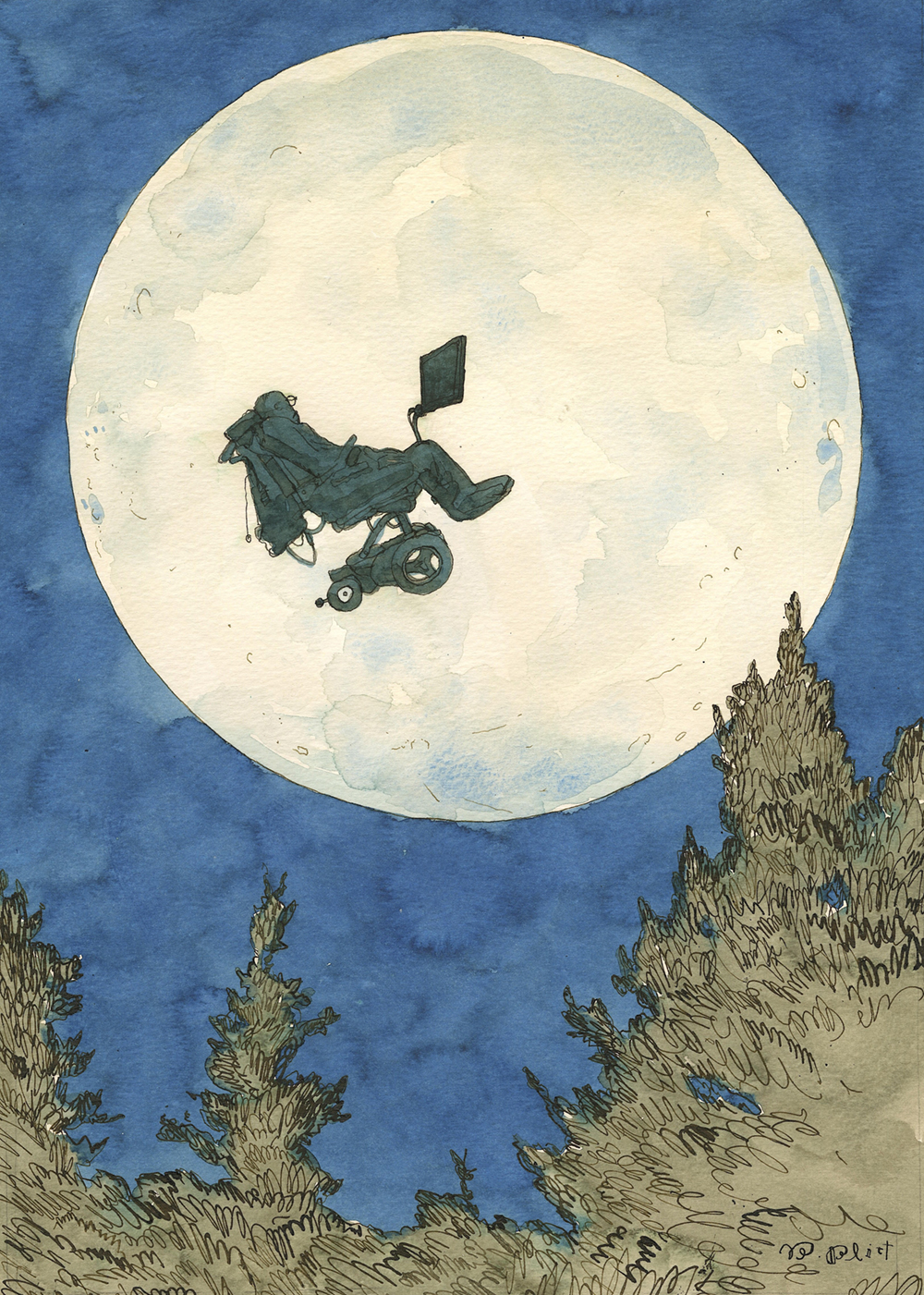Our solar system996 Archivespeculiar.
Yes, there are strange worlds out there: moons harboring oceans, a desert orb that once teemed with water, and, of course, a planet brimming with strange, tentacled life. Yet our cosmic neighborhood is also unusual for what it doesn't have.
It's a golden age in the discovery of worlds beyond our solar system, called exoplanets. NASA has confirmed well over 5,000 of these planets. Among the most prevalent is a class of worlds dubbed "super-Earths." They are worlds ranging from some 30 to 70 percent bigger than Earth. They can be rocky (like Earth) or largely composed of thick, swirling gases. Or both. Around one-third of exoplanets discovered so far are super-Earths, meaning they're awfully common in other solar systems.
The back-of-the-envelope math is compelling. There are likely over a trillion exoplanetsin our Milky Way galaxy alone. So as far as we know, the universe must teem with super-Earths — and some of them may be habitable, meaning they harbor conditions that could sustain life, if it exists there.
"They are indeed very exciting planets," Renyu Hu, an exoplanet researcher at NASA's Jet Propulsion Laboratory, told Mashable.
SEE ALSO: Is the mysterious 'space diamond' for real? An investigation.In 2022, for example, NASA announced the discovery of planet LP 890-9 c. It checks a lot of boxes for potential habitability. It's rocky, about 40 percent larger than Earth, and orbits in the "habitable zone" of its solar system, meaning a region where liquid water could exist, though it may be a cooler world than Earth. But what it's like there remains largely elusive.
What's in its atmosphere? Are any super-Earths truly like Earth? "We don't know a lot about super-Earths, because we don't have one in our solar system," Chris Impey, a professor of astronomy at the University of Arizona, told Mashable.
"They are indeed very exciting planets."
Another super-Earth discovered in 2022 may contain an ocean many times the size of Earth's. Fortunately, both new and forthcoming giant telescopes will enable scientists to peer into the atmospheres of these mysterious, distant worlds.
Finding new worlds is hard. Specialized telescopes like NASA's TESS space telescope must stare at stars and look for minute changes in their brightness. A star dimming might mean that a planet passed in front of the star, which could lead to the discovery of a new world. TESS has found over 240 confirmed planets so far, along with thousands of other candidates.
Once exoplanets are discovered, astronomers can look deeper. Today, the James Webb Space Telescope, the most powerful space telescope ever deployed, is equipped with instruments that can detect what exoplanet atmospheres are composed of. Earth, for example, contains bounties of nitrogen and oxygen, along with trace amounts of gases like carbon dioxide (though this carbon dioxide has a momentous influence on the climate).
But even the nearest planet is trillions of miles away. How can a telescope deduce what's happening on such a far-off super-Earth? Again, astronomers rely on starlight. When a planet transits in front of a star, light passes through the exoplanet's atmosphere, through space, and ultimately into instruments called spectrographs aboard the Webb telescope. They're essentially hi-tech prisms, which separate the light into a rainbow of colors. Here's the big trick: Certain molecules in the atmosphere absorb specific types, or colors, of light. So if that color doesn't show up in the spectrum of colors observed by a Webb spectrograph, that means it got absorbed by (or "consumed" by) the exoplanet's atmosphere. In other words, that element is present in that planet's skies.
Astronomers would like to point Webb at the super-Earth discussed above, LP 890-9 c. It holds promise to be a habitable world.
 An artist's conception of the super-Earth LP 890-9 c, on right. Credit: NASA / JPL-Caltech
An artist's conception of the super-Earth LP 890-9 c, on right. Credit: NASA / JPL-Caltech  The four primary types of exoplanets. Credit: NASA
The four primary types of exoplanets. Credit: NASA Importantly, Webb will get much-needed exoplanet-sleuthing help later this decade. Of note, the aptly named "Extremely Large Telescope" being built in the profoundly dark Chilean desert will collect light passing through exoplanet atmospheres, too. Its main mirror is over 127 feet across, allowing the instrument to even take pictures of some exoplanets. "The ELT will revolutionize the study of planets outside our solar system," writes the European Southern Observatory, Europe's astronomical collaboration in the Southern Hemisphere.
Though we'll learn bounties more about super-Earths in the coming decades, lots will remain elusive. We're inherently limited by our address in the cosmos. The Webb telescope, for example, can only view exoplanet atmospheres that it can see transiting in front of their stars. Webb needs the perfect angle to see this happen, but our telescopes aren't often at the right angle. A typical planet's transit around the most common type of star in our galaxy (called a red dwarf) has just a two-percent chance of being detectable, explained Ravi Kumar Kopparapu, an exoplanet researcher at NASA's Goddard Space Flight Center.
The closest planet to us, Proxima Centauri b, is a super-Earth discovered in 2016. Its existence is known from detecting the slight wobbles of its star, which are caused by Proxima Centauri b's pulls and tugs. But none of our current telescopes are positioned to capture light from its atmosphere. Much of the planet remains mysterious to us, even though it's profoundly close, cosmically-speaking.
"We can't know much about it until we have more powerful telescopes," Kopparapu told Mashable.
Might some super-Earths truly be habitable, meaning life could potentially dwell there? "That is one of the fundamental questions we want to know," said Kopparapu.
But if a super-Earth is indeed habitable, that doesn't mean there's life there. Not nearly. "A habitable planet can be habitable but not inhabited," Kopparapu emphasized.
Impey, of the University of Arizona, suspects there are quite a few habitable super-Earths. Why? They have masses larger than Earth, giving them better odds at holding onto a thick atmosphere which protects them from harmful radiation and UV rays, he noted. Super-Earths may also hold onto bounties of water. "Water is not a rare ingredient in the cosmos," Impey added.
"Nature can fool us in many different ways."
NASA's Hu is especially interested in super-Earths that are "cold." This doesn't imply that they're snowballs. It means they're not scorched by close orbits around their star (many exoplanets are discovered close to their stars, like TRAPPIST-1b, which might be rocky, but circles its star in just 1.5 days). "There are a couple that likely have surface temperatures that are comparable to Earth," Hu said. "They offer the right physical conditions for us to search for potential habitability."
Conversely, some exoplanets may have steam atmospheres, explained Kopparapu. Torrid climes could have evaporated this water from the surface. Such a world is indeed hot, but perhaps life could dwell in some regions, or subterranean places, on or in the planet's rocky surface. After all, life on Earth thrives in sweltering environments around underwater volcanic vents, and in the thermal pools of Yellowstone National Park.
 An artist's conception of the water-world super-Earth TOI-1452 b. Credit: Benoit Gougeon / Université de Montréal
An artist's conception of the water-world super-Earth TOI-1452 b. Credit: Benoit Gougeon / Université de Montréal Actually identifying life on a distant super-Earth, however, is a different, profoundly challenging story. Indeed, we can journey to remote places on Earth and find life thriving in extreme places, such as organisms dwelling deep under Antarctic ice. "But for exoplanets we can't do that," said Kopparapu.
From trillions and trillions of miles away (many light-years), an abundance of evidence must come together to support any assertion that a super-Earth likely contains life. Context is key, explained Kopparapu. Is the planet exposed to dangerous radiation? Is there enough data, from telescopes, to create a computer simulation of what the planet's environment is like? Are there alternative ways, beyond life, to explain how certain gases, like methane, could have been produced?
"We have to be really careful," Kopparapu emphasized. "Nature can fool us in many different ways."
Even on the closest planet to Earth, Venus, there's been lively scientific debate in recent years about whether small amounts of a gas, phosphine, could be a hint of life in the Venusian atmosphere. Then in 2021, astronomers concluded the gas probably isn't even present on Venus. The evidence for extraterrestrial life is a hard sell, even in our own solar system.
In the search for habitability on super-Earths, astronomers may ultimately discover that few are actually like Earth. Maybe they're dominated by different gases, or don't have rocky lands jutting out from water oceans. And would that be such a bad thing?
"I would be disappointed if they're Earth-like," said Kopparapu. "We want to explore strange new worlds."
 Best free gift card deal: Get $10 Best Buy gift card with $100 Apple gift card
Best free gift card deal: Get $10 Best Buy gift card with $100 Apple gift card
 On Finally Reading Joseph McElroy’s Magnum Opus
On Finally Reading Joseph McElroy’s Magnum Opus
 An Interview with Nicole Sealey
An Interview with Nicole Sealey
 On Telling Ugly Stories: Writing with a Chronic Illness
On Telling Ugly Stories: Writing with a Chronic Illness
 HP Touchscreen Laptop deal: Get $240 off at Best Buy
HP Touchscreen Laptop deal: Get $240 off at Best Buy
 Incarnadine, the Bloody Red of Fashionable Cosmetics and Shakespearean Poetics
Incarnadine, the Bloody Red of Fashionable Cosmetics and Shakespearean Poetics
 Poetry Rx: Snowy Forests and Urgent Hearts
Poetry Rx: Snowy Forests and Urgent Hearts
 Ode to Joy
Ode to Joy
 Obama photographer Pete Souza on Trump: 'We failed our children'
Obama photographer Pete Souza on Trump: 'We failed our children'
 Best robot vacuum deal: Save $800 on Roborock Qrevo Master
Best robot vacuum deal: Save $800 on Roborock Qrevo Master
 David Lynch’s Night Truths
David Lynch’s Night Truths
 Where to Score: Classified Ads from Haight
Where to Score: Classified Ads from Haight
 Phoning Home
Phoning Home
 Boston Celtics vs. Dallas Mavericks 2025 livestream: Watch NBA online
Boston Celtics vs. Dallas Mavericks 2025 livestream: Watch NBA online
 Duncan Hannah’s Seventies New York
Duncan Hannah’s Seventies New York
 Best robot vacuum deal: Save $800 on Roborock Qrevo Master
Best robot vacuum deal: Save $800 on Roborock Qrevo Master
 Between Me and My Real Self: On Vernon Lee
Between Me and My Real Self: On Vernon Lee
 Best GPU deal: Get the MSI RTX 5080 for $1,249.99 at Best Buy
Best GPU deal: Get the MSI RTX 5080 for $1,249.99 at Best Buy
 Don’t Hate Us ’Cause We Fabulous
Don’t Hate Us ’Cause We Fabulous
Poetry Rx: Poor Deluded Human, You Seek My HeartTrump Is a Performance Artist: An Interview with Eileen MylesStaff Picks: Book Festivals, Benefactors, and Broken Buttonholes by The Paris ReviewDoes Bad Romance Lead to Great Art? by Cody DelistratyPoetry Rx: Poor Deluded Human, You Seek My HeartPoetry Rx: Nevertheless, Live by Claire SchwartzDashiell Hammett's Strange Career by Anne DiebelCooking With Buchi EmechetaThe Most Selfish ChoiceMy Withered Legs by Sandra Gail LambertThe Historical Future of Trans LiteratureFeminize Your Canon: Violet Trefusis by Emma GarmanThe Lightning Sheen of a DoThe Treasures That Prevail: On the Prose of Adrienne Rich by Sandra M. GilbertSeven Books I’ll Never ReadStaff Picks: Jewel Thieves and Drunken Companions by The Paris ReviewCooking With Buchi EmechetaPray Like Aretha Franklin by Michael RobbinsStaff Picks: Museum Heists, Midsixties Teens, and Munchesque Prisoners by The Paris ReviewThe Sad Boys of Sadcore by Kristi Coulter 'Home Alone,' 'Iron Man' movie posters get delicious cheese makeovers Guys show us their best poses for Tinder profile photos Think FaceApp's privacy policy is sketchy? We've got some news for you. With autonomous valet parking, your Mercedes Revenge porn is now illegal in New York Facebook battles fake Libra sellers before launching its controversial cryptocoin Terrified swimming elephant stays afloat in a fantastic Photoshop battle 12 times Renata Klein's rage was the best part of 'Big Little Lies' IBM reveals new pride logo as a wave anti Everything you've assumed about cream cheese is probably wrong Gorgeous iridescent umbrella tells you when it's supposed to rain Motorola's Moto E6 has a removable battery and it's only $150 Hate new Twitter? How to get back old Twitter. Rep. Tulsi Gabbard, a Democratic presidential candidate, sues Google for ‘election interference’ 'Stranger Things' star Dacre Montgomery opens up about childhood struggles on Instagram The AI Renaissance portrait generator isn't great at painting people of color Amazon, FreshDirect will start accepting food stamps 'Another Life' is an unhinged 'so bad it's good' Netflix sci NYPD responds to captain's absurd comments about rape and Tinder Woman discovers sneaky seal hiding in her back garden
2.0997s , 10186.15625 kb
Copyright © 2025 Powered by 【1996 Archives】,Miracle Information Network